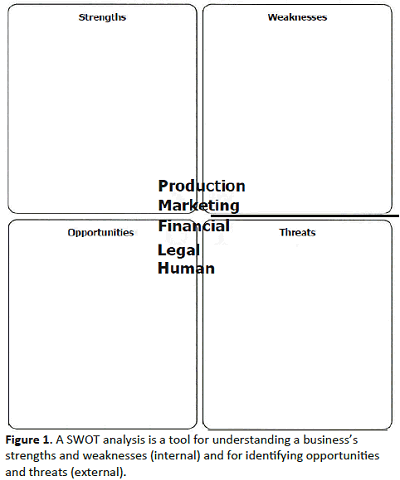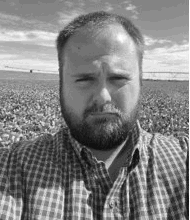

To send a message to an author, click on the author's name at the end of the article.
This Month in Ag Connection | Ag Connection - Other Issues Online
Tar spot of corn is a fungal pathogen that was discovered relatively recently in the United States. Tar spot has been confirmed in Iowa, Illinois, Indiana, Wisconsin, Ohio, Michigan, Nebraska, and Missouri. The disease was previously confirmed in multiple locations and years in northeast Missouri. It was confirmed in northwest Missouri for the first time, this fall.
In severe outbreaks, yield losses of 25 to 30% have been observed in the Midwest. Disease infection during grain fill stages threatens yield due to early leaf senescence. The primary reason for reduced yield is reduced green leaf area, which reduces photosynthesis. Severe infection can eventually lead to stalk lodging later in the season as well. Prolonged leaf wetness (>7 hours) favors disease development. Cool temperatures (60-70 degrees F) and humid conditions (>75% relative humidity) are also thought to promote disease development.
The pathogen that causes tar spot can overwinter on corn residue left after harvest. Therefore, tar spot is expected to stay for the foreseeable future. The pathogen makes small flecks that resemble road tar on the top and bottom of plant leaves. These small spots are fungal fruiting bodies known as stromata. Even though these spots are relatively small, each stromata is capable of producing thousands of microscopic spores.
Tar spot can be confused with insect frass and certain foliar nutrition products and other diseases such as Physoderma brown spot or late-season Southern corn rust. Close examination is a must. One key diagnostic tool for tar spot is that stromata cannot be scratched off the leaf surface unlike insect frass or foliar nutrients. The dark lesions of Physoderma brown spot are restricted to the leaf midrib. Southern corn rust infection can result in late-season, black teliospores forming on leaves. These spores can be wiped off the leaf surface. Additionally, tar spot stromata may develop fisheye lesions around them as the disease progresses.
In states with high tar spot disease pressure, universities have carried out fungicide studies and results are summarized in the corn fungicide efficacy tables on the Crop Protection Network's website: cropprotectionnetwork.org. The University of Missouri is working with industry partners to evaluate fungicide efficacy for Missouri corn producers. Current recommendations are foliar fungicide applications between VT and R2 when the pathogen is present and tar spot has been observed. In a severe outbreak, two fungicide applications may be necessary. Other options to aid in tar spot control include tillage and crop rotation, as well as proper hybrid selection.
Producers should consult with their seed sales professional to acquire company data on varietal tar spot disease resistance ratings. If tar spot is suspected, please contact the MU Plant Diagnostic Clinic. Visit plantclinic.missouri.edu for instructions on sample submission. To send photos please e-mail them to plantclinic@missouri.edu.
References:
Bish, M., and P. Tian, 2022. Tar Spot of Corn Confirmed in Missouri: Disease Can Cause Significant Yield Loss. University of Missouri Extension News. Columbia, MO.
Quinn, D., and D. Telenko, 2022. Tar Spot of Corn: What to Know and New Research. Pest&Crop Newsletter. Purdue University Ext., West Lafayette, IN.
Source: Nick Wesslak, Agronomy Specialist
This Month in Ag Connection | Ag Connection - Other Issues Online
Nutritional demands for gestating cattle are greatest during the third trimester when 75% of fetal growth occurs. Maternal nutrition during gestation is a critical influencer on growth, health, and reproductive success of the progeny. Nutritional demand for protein, energy, vitamins, and minerals increases during this time. The fetus is going through final lung development, fetal muscle, and fetal adipose tissue formation. Nutritional deficiencies during late gestation can reduce muscle fiber number and adipocyte development, affecting calf growth performance, feedlot efficiency, and corresponding carcass quality.
When calving in January or February cows may need additional protein and energy to maintain body condition during cold temperatures. Cows calving from March through May could face limited forage growth and volume. It is important to monitor forage availability and stocking rates and supplement with stored forages, as needed. Analyze forage to evaluate nutrient and supplementation needs for fall calving cows. Maintaining body condition for fall calvers is critical for cows to breed back when temperatures are cold.
It is important to have a good nutrition plan as cows enter late gestation. Cows going into calving with a body condition score of 5 or higher tend to have an easier time calving, causing less stress on calves, leading to quicker standing and nursing times.
Source: Heather Conrow, Livestock Specialist
This Month in Ag Connection | Ag Connection - Other Issues Online
Whether new to farming and trying to decide the best areas to focus on or, if experienced and looking to expand to a new enterprise, there are similar considerations.
Begin by realistically assessing interests, resources, and risk capacity. If these are written down, they often become more fact-based and less subjective, especially if shared with others. Establish goals with some hard numbers in the form of cash flow projections and determine relevant market opportunities.
Get started by doing primary and secondary research. The secondary research will be the easier of the two, but may have limited applicability to individual situations. Secondary research is finding, reviewing, and evaluating the work of others. Be certain to use reliable and objective secondary data, such as, that from land grant universities.
Primary research is conducting initial request for data. An example is asking customers at a farmers' market the desired packaging of meat products (individual packages, bundles of 10 pounds, 25 pounds, half or whole). When expanding an operation, an option would be to keep track of sale units and requests.
The next step is to evaluate resources. Think beyond just the physical and financial. Include social capital - such as contacts with suppliers, lenders, workers, etc., which may contribute to success. Another asset could be the infrastructure, which includes roads, ports, train spurs, distributors, processors - anything in the physical environment that might affect business. An example would be small acreage within a 30-minute drive from an urban area with good roads and clear signage.

While assessing entrepreneurial opportunities, think in terms of risk management, as well as strengths. A SWOT analysis can aid in this process. (see Figure 1) A SWOT analysis incorporates strengths and weaknesses which are internal to the business and the opportunities & threats which are external to the business. It may be beneficial to overlay the SWOT diagram with the five areas of risk that need to be managed. These areas are production, marketing, financial, legal, and human.
Production risk is any activity or event that impacts output. This would include weather, disease, insects, an infertile bull, equipment break-downs or supply-chain interruptions.
Marketing risk is any market related activity or event leading to variability of prices farmers receive for their products or pay for production inputs. Examples include hedging grain a year in advance of harvest, locking in a profit margin. Another example is selling to a wholesale and a retail outlet to manage quantity and price. The wholesale market would likely take more volume, but at a lower price whereas the retail market might be less volume, but better price. In the research phase, it is important to determine product demand. This will likely change over time or as situations demand.
Financial risk includes risks that threaten the financial health and stability of the business. This includes having a clear understanding of the financial components of the business. The best place to begin financial discovery is by looking at budgets which gives a baseline that may support the business pursuit or change its direction. To find objective budgets, check out land grant universities. University of Missouri's can be found at https://tinyurl.com/MU-budgets and https://tinyurl.com/fapri-budgets.
Next is building a balance sheet. The balance sheet shows financial assets and liabilities. It is a snapshot in time exhibiting short, intermediate, and long-term assets and liabilities. If pursuing external funding, this is usually required. Equally important are the cash flows for an existing business or cash flow projections for a new business showing how cash will come into and flow out of the business. This is shown monthly for a period of three years. This should demonstrate realistic expectations as compared to the industry standards and show the times of year when cash flow needs are the greatest and may require an external source of cash.
The income and expense statement is often called a Profit and Loss or P & L. It shows what is left after all business expenses are paid. Developing and understanding business financials will help mitigate financial risk.
Knowing the expected rate of return on any investment, combined with overall goals, will help determine if this business endeavor is the right one. Be honest in assessing individual risk comfort level and the impact business failure. Look at financial risk mitigating tools such as health and life insurance.
Legal risk may arise when there is an imbalance in power or information between parties. It is important to be educated on issues affecting the business, including regulatory, environmental, and even business structure.
Human risk is associated with the people involved in the business. Considerations in this area may include:
Starting a new enterprise is exciting and challenging. These first steps will walk through the evaluation stage to see if it is a good fit. Even if the decision is to shift direction, this process saves time, money, and possibly the emotional stress of a failed business. While failures are invaluable learning experiences, a little research and planning can improve business success and reduce failed attempts. These steps lay the foundation for a business plan when proceeding with the venture.
Source: Darla Campbell, Ag Business & Community Specialist
This Month in Ag Connection | Ag Connection - Other Issues Online

Nick Wesslak, is the new agronomy specialist located in the Marion County Extension Center. He has a B.S. in plant science, with an emphasis in crop management and a minor in ag systems management from MU. He also has an M.S. in natural resources with an emphasis in soil, environmental and atmospheric sciences from MU. Nick has prior work experience in Mississippi working for Corteva Agriscience and Azlin Planting Company. Hi background is in agricultural research and commercial farming.
Nick joined the Extension team in Spring 2022 and has been busy with several projects including migratory insect trapping and sampling, weed escape sampling for herbicide resistance screening, MU Certified Strip Trial Program, disease scouting schools, PPAT certification and much more. Currently, he is training with other extension agronomists to learn programming materials to expand his training portfolio.
Nick can be reached at (573)769-2177 or r.n.wesslak@missouri.edu.

Publishing Information
Ag Connection is published monthly for Northeast and Central areas of Missouri producers and is supported by the University of Missouri Extension, the Missouri Agricultural Experiment Station, and the MU College of Agriculture, Food and Natural Resources. Managing Editor: Mary Sobba.